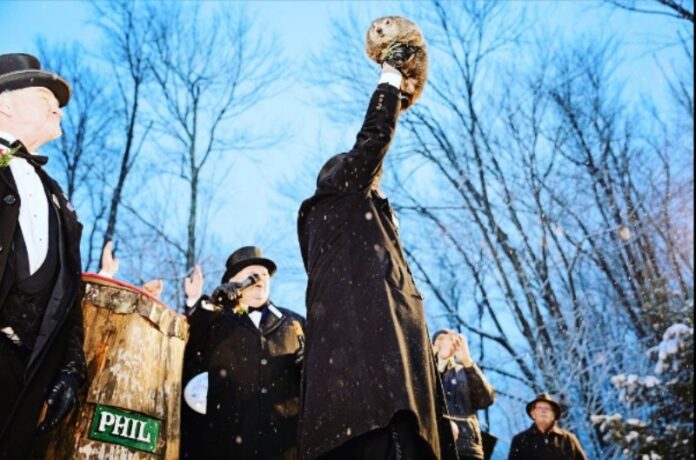
Today, Feb 2nd, is known as Groundhog Day. It’s not an official holiday, but it’s celebrated nonetheless. Punxsutawney, PA has become the center point of the celebration as everyone waits to see if the famous groundhog named Punxsutawney Phil will see his shadow or not.
If Phil sees his shadow and returns to his burrow, legend says we are in store for six more weeks of winter. But, if he doesn’t see his shadow, spring is on the way.
Due to COVID-19, the event was virtual this year.
This year, the Groundhog Club has declared that Phil saw his shadow and we can expect six more weeks of winter!
Where does this tradition come from?
As explained by groundhog.org:
The Christian religious holiday of Candlemas Day has become most commonly associated with the current celebration, but it’s roots are older than that. The celebration started in Christianity as the day, (February 2nd), when Christians would take their candles to the church to have them blessed. This, they felt, would bring blessings to their household for the remaining winter.
As time rolled on the day evolved into another form. The following English folk song highlights the transition to weather prognostication.
If Candlemas be fair and bright,
Come, Winter, have another flight;
If Candlemas brings clouds and rain,
Go Winter, and come not again.
This “interpretation” of Candlemas Day became the norm for most of Europe. As you can read, there is no mention of an animal of any kind in the preceding song. It wasn’t until this traditional belief was introduced to Germany that an animal was introduced into the lore, hence another evolution of February 2nd. If, according to German lore, the hedgehog saw his shadow on Candlemas Day there would be a “Second Winter” or 6 more weeks of bad weather. As German settlers came to what is now the United States, so too came their traditions and folklore. With the absence of hedgehogs in the United States, a similar hibernating animal was chosen. This leads us to yet another evolution in the legend and to present day Punxsutawney.
The accuracy of Punxsutawney Phil?
“Since 1887, Phil and his predecessors have seen their shadow 104 times, and not seen it only 19 times. According to the Stormfax Almanac, which has been tracking Phil’s predictions since 1887, Phil has been correct only 39% of the time. According to the National Oceanic and Atmospheric Administration, which analyzed Phil’s predictions from 2008 to 2018, he was right only 40% of the time. The people who take care of Phil, members of the Punxsutawney Groundhog Club’s Inner Circle, however, insist that Phil’s predictions are 100% accurate.”
















